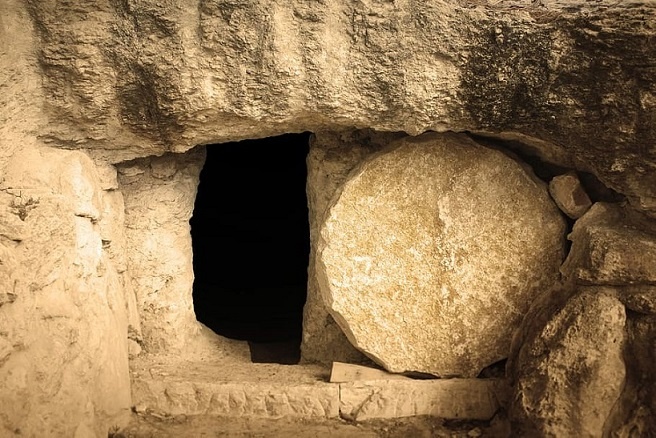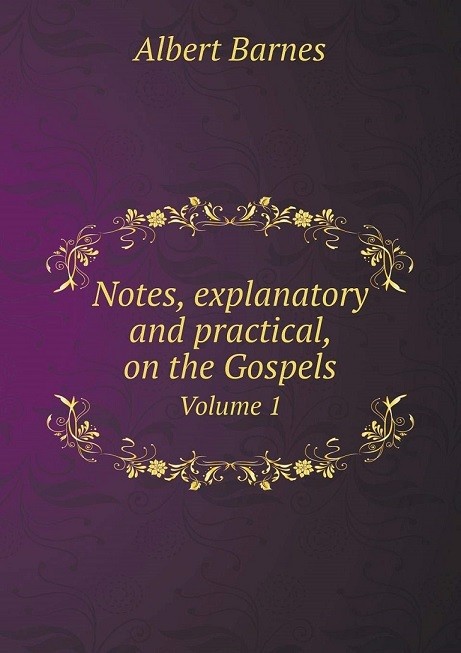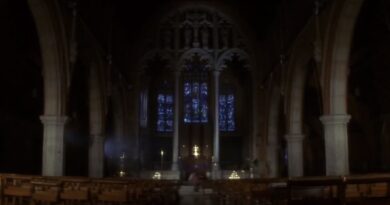
“Three Days and Three Nights in the Heart of the Earth”
A1 – “Three Days and Three Nights” as a Round Number

40. In the same way that Jonah. See Jonah 1:17 (Note there is no “whale” there. It was a “big fish,” possibly a white shark which is reported to be able to swallow a horse whole. God prepared it specially.) The miracle was that Jonah’s life was protected during the time spent in the big fish. This is symbolic of the time Jesus would spend in the grave and then be raised from death. Three days and three nights. This is a Jewish expression. Jesus said in Matt, 16:21, that he would be raised to life “on the third day.” Mark records this as “after three days” (Mark 8:31). In Jewish usage, “three days and three nights,” “on the third day,” and “after three days,” all mean the same period of time. (See 2 Chron. 10:5&12; Esther 4:16 & 5:1). Christ was buried Friday evening, was in the grave Saturday, and raised from death very early Sunday morning.
– Rhoderick D. Ice, The Bible Study New Testament, Volume One The Four Gospels and Acts, College Press, Joplin, Missouri, USA, 1974, p. 61.

The heart of the earth is a figurative expression for the grave which is also called “the lower parts of the earth” (Psalms 63:9; Ephesians 4:9).
– Coffman’s Commentaries on the Bible, Matthew, Vol. 1, Abilene Christian Univ Press, Texas, USA, 1974 (online version).

40. As Jonah was three days and three nights in the belly of the great fish. See Jonah 1:17. The great fish was probably not a whale, the Greek is “sea monster,” but a white shark, which abounds abounds in the Mediterranean, and is said to swallow a horse whole. The miracle was the preservation of the life of Jonah during his living burial. This was a type of the burial and resurrection of Christ. So shall the Son of man be three days and three nights. Jesus says (Matt. 16:21) that he will “be raised again the third day.” Hence, in Jewish usage the third day must mean the same as three days and three nights. It was and is customary with the Orientals to make any part of the day stand for the whole twenty-four hours. Compare Matt. 16:21, Mark 8:31, 2 Chron. 10:5 and 10:12, Esther 4:16, Gen. 7:4, 12, Exod. 24:18, 34:28. A traveler in the East writes: “At length the tenth morning arrived—the tenth morning because, though we performed nominally ten days quarantine, yet it was, really, only eight days. We landed at nine o’clock in the evening of the first day, and were liberated at six o’clock in the morning of the tenth day, but it was held to be ten days according to the custom of the East.” Christ was buried Friday evening, lay in the grave Saturday, and rose Sunday, parts of three days, rose “on the third day,” and was in the grave the space of time meant in eastern usage by three days and three nights. In the heart of the earth. In the sepulcher.
– B. W. Johnson, The People’s New Testament, With Explanatory Notes, Christian Publishing Company, St. Louis, MI, USA, 1891. (This cover is from 1940 edition.).

For as Jonas was three days and three nights in the whale’s belly (Jonah 1.17), so shall the Son of man be three days and three nights in the heart of the earth — This was the second public announcement of His resurrection three days after His death. (For the first, see John 2.19.) Jonah’s case was analogous to this, as being a signal Judgment of God; reversed in three days; and followed by a glorious mission to the Gentiles. The expression “in the heart of theearth,” suggested by the expression of Jonah with respectto the sea (2.3, in LXX.), means simply the grave, but thisconsidered as the most emphatic expression of real and total entombment. The period during which He was to lie in the grave is here expressed in round numbers, according to the Jewish way of speaking, which was to regard any part of a day, however small included within period of days, as a full day. (See 1 Samuel 30. 12, 13; Esther 4.16; 5.1; ch. 27. 63, 64, etc.).
– Jamieson, Robert, D.D.; Fausset, A. R.; Brown, David, Commentary Critical and Explanatory On The Old and New Testaments, 1878, Vol. II, p. 42. (This cover is from 2013 Edition, [ebook Kindle]).

In the heart of the earth. This expression was probably used with reference to that of Jonah 2: 3, ‘heart of the seas’; comp. Deut. 4:11, ‘unto the heart of heaven,’ Psa. 46:2, ‘in the heart of the seas,’ (all these passages in Rev. Ver. and margin of Com. Ver.) The reference is to our Lord’s interment, and the passages compared show that there is no propriety in insisting, as many do, that the language is too strong for that simple idea, and must therefore be referred to what is called his “descent into Hades.” Three days and three nights. See Jonah 1.17. Our Lord was actually in the grave less than thirty-six hours, but it began before the close of Friday, and closed on the morning of Sunday, and according to the mode of counting time among the Jews, this would be reckoned three days, both the first and the last day being always included. (Comp. on 17:1, and on 27:63 f.) The only difficulty is, that he not merely says “three days,” but “three days and three nights,” when he spent only two nights in the tomb. But the Jews reckoned the night and day as together constituting one period, and a part of this period was counted as the whole.
– An American Commentary on the New Testament. Edited by Alvah Hovey. Commentary on The Gospel of Matthew. John A. Broadus, American Baptist Publication Society, Philadelphia, PA, USA, 1886, p. 276. (This cover is from 2011 Edition)

So shall the Son of man be three days and three nights in the heart of theearth. That Christ means himself by the “son of man”, there is no reason to doubt; and his being laid in a tomb, dug out of a rock, is sufficient to answer this phrase, “the heart of the earth”, in distinction from the surface of it; but some difficulty arises about the time of his continuing there, and the prediction here made agreeable to the type: for it was on the sixth day of the week, we commonly call “Friday”, towards the close, on the day of the preparation for the sabbath, and when the sabbath drew on, that the body of Christ was laid in the sepulchre; where it lay all the next day, which was the sabbath of the Jews, and what we commonly call “Saturday”; and early on the first of the week, usually called “Sunday”, or the Lord’s day, he rose from the dead; so that he was but one whole day, and part of two, in the grave. To solve this difficulty, and set the matter in a clear light, let it be observed, that the three days and three nights, mean three natural days, consisting of day and night, or twenty four hours, and are what the Greeks call νυχθημερα, “night days”; but the Jews have no other way of expressing them, but as here; and with them it is a well known rule, and used on all occasions, as in the computation of their feasts and times of mourning, in the observance of the passover, circumcision, and divers purifications, that מקצת היום ככולו, “a part of a day is as the whole”: and so, whatever was done before sun setting, or after, if but an hour, or ever so small a time, before or after it, it was reckoned as the whole preceding, or following day; and whether this was in the night part, or day part of the night day, or natural day, it mattered not, it was accounted as the whole night day: by this rule, the case here is easily adjusted; Christ was laid in the grave towards the close of the sixth day, a little before sun setting, and this being a part of the night day preceding, is reckoned as the whole; he continued there the whole night day following, being the seventh day; and rose again early on the first day, which being after sun setting, though it might be even before sun rising, yet being a part of the night day following, is to be esteemed as the whole; and thus the son of man was to be, and was three days and three nights in the grave; and which was very easy to be understood by the Jews; and it is a question whether Jonas was longer in the belly of the fish.
– John Gill, An Exposition of the New Testament, 1746-1748, Vol. 1, comment to Matthew 12:40 (This cover is from Kindle Edition, 2011).

The Son of man shall be three days and three nights in the heart of the earth. I. The Jewish writers extend that memorable station of the unmoving sun at Joshua’s prayer to six-and-thirty hours; for so Kimchi upon that place: “According to more exact interpretation, the sun and moon stood still for six-and-thirty hours: for when the fight was on the eve of the sabbath, Joshua feared lest the Israelites might break the sabbath: therefore he spread abroad his hands, that the sun might stand still on the sixth day, according to the measure of the day of the sabbath, and the moon, according to the measure of the night of the sabbath, and of the going-out of the sabbath; which amounts to six-and-thirty hours.”
II. If you number the hours that passed from our Saviour’s giving up the ghost upon the cross to his resurrection, you shall find almost the same number of hours; and yet that space is called by him “three days and three nights,” when as two nights only came between, and only one complete day. Nevertheless, while he speaks these words, he is not without the consent both of the Jewish schools, and their computation.
– John Lightfoot, Horae Hebraicae et Talmudicae: Hebrew and Talmudical exercitations upon the Gospels, the Acts, some chapters of St. Paul’s Epistle to the Romans, and the First Epistle to the Corinthians, Cambridge, England, 1658. (This quoting is from 1859 edition, Oxford University Press, England, Vol. II, pp. 209, 210.).

Three days and three nights – It will be seen in the account of the resurrection of Christ that he was in the grave but two nights and a part of three days. See Matt. 28:6. This computation is, however, strictly in accordance with the Jewish mode of reckoning. If it had not been, the Jews would have understood it, and would have charged our Saviour as being a false prophet, for it was well known to them that he had spoken this prophecy, Matt. 27:63. Such a charge, however, was never made; and it is plain, therefore, that what was meant by the prediction was accomplished. It was a maxim, also, among the Jews, in computing time, that a part of a day was to be received as the whole. Many instances of this kind occur in both sacred and profane history. See 2 Chronicles 10:5, 12; Gen. 42:17-18. Compare Esther 4:16 with 5:1.
In the heart of the earth – The Jews used the word heart to denote the interior of a thing, or to speak of being in a thing. It means, here, to be in the grave or sepulchre.
– Albert Barnes, Notes Explanatory & Practical on the Gospels, Harper & Brothers Publishers, New York, USA, 1847, Vol. I, p. 150. (This cover is from 2013 edition).

“Three days and three nights” may simply mean three days in popular speech. Jesus rose “on the third day” (Matt. 16:21), not “on the fourth day.” It is just a fuller form for “after three days” (Mark 8:31; 10:34).
– Archibald Thomas Robertson, Word Pictures in the New Testament, 1927, Vol. 1 (Matthew – Mark). (This six-volume set is from 1982 edition).

40 for as Jonah was three days and three nights in the belly of the whale so shall the Son of man be three days and three nights in the heart of the earth. [Jesus was one full day, two full nights and parts of two other days in the grave. But, as the Jews reckoned a part of a day as a whole day when it occurred at the beginning or end of a series, he was correctly spoken of as being three days in the grave. The Jews had three phrases, viz.: ” on the third day,” “after three days,” and “three days and three nights,” which all meant the same thing; that is, three days, two of which might be fractional days. With them three full days and nights would be counted as four days unless the count began at sundown, the exact beginning of a day (Acts x. I-30). For instances of Jewish computation of days see Gen. xiii. I7, I8; I. Kings xii. 5, I2; Esth. iv. I6; v. I; Matt. xxvii. 63, 64.
… The expression “heart of the earth” does not mean its center. The Jews used the word “heart” to denote the interior of anything (Ezek. xxviii. 2). The phrase is here used as one which would emphatically indicate the actual burial of Christ.
– J. W. McGarvey and Philip Y. Pendleton, The Fourfold Gospel, Standard Publishing Company, Cincinnati, Ohio, USA, 1914, pp. 306, 307. (This cover is from 2010 edition.)

Heart of the earth — As our Lord was not buried in the ground, but enclosed in a tomb of rock, some have understood by the phrase, heart of the earth, the place of departed spirits, to which our Lord at his death descended. But surely the rock is a part of the earth, as truly as the soil. The bosom of a rock is very expressively styled the heart of the earth.
– Daniel Denison Whedon, A Popular Commentary on the New Testament, The Gospels: I (Matthew – Mark), London, England, 1874, p. 160 (This cover is from 2012 edition).

… Jonah was a sign to his own generation and a foreshadowing of the greater Who was coming. But the second was incongruous because in Daniel 7:13-14, instead of going into the grave, the Son of Man was to come in the clouds of Heaven from earth to the throne of God. The Son of Man was not supposed to be buried. He was supposed to ascend in triumph. And therein lay the sign. What was deemed impossible would happen, and when it did happen let them take note. The One Who was to take the throne of Heaven would first of all be locked in the body of the earth for three days and three nights, before, like Jonah had, He came forth in triumph. The presumption behind this was that after three days and three nights He would somehow rise again, as Jonah had. Thus Jesus death, burial and resurrection would be the promised sign. And it would convince many. It even convinced Paul. See 1 Corinthians 15:3-8.
– Peter Pett, Commentary on the Bible (Series), Matthew.

the heart of the earth = in the earth: i.e. the sepulchre, or tomb, Matthew 27:60. Mark 15:46. Luke 23:53. John 19:40. Acts 13:29. It is the Figure of speech Pleonasm (a Hebraism), App-6, = the midst, or “in”. See Exodus 15:8. Psalms 46:2. 2 Samuel 18:14. Deuteronomy 4:11. In any case it is not “the centre”, any more than the heart is in the centre of the body, instead of near the top. We are to conclude that the Lord establishes “the literal validity of the history of Jonah”, inasmuch as He spoke “not His own words but only words of the Father” (see John 7:16; 8:28, 8:46, 8:47; 12:49; 14:10, 14:24; 17:8); so that the assertions of modern critics are perilously near blasphemy against God Himself.
– Ethelbert William Bullinger, The Companion Bible, 1909, p. 1335. (This cover is from 1993 edition).

Jonah spent “three days and three nights” in the fish (Jnh 1:17). but if the normal sequence of Passion Week is correct…, Jesus was in the tomb only about thirty-six hours. Since they included parts of three days, by Jewish reckoning Jesus was buried “three days,” or to put it another way, he rose “on the third day” (16:21). But this does not cover more than two nights. Some advocate a Wednesday crucifixion date…; but though that allows for “three days and three nights,” it runs into difficulty with “on the third day.” In rabbinical thought a day and a night make an onah, and a part of an onah is as the whole… Thus according to Jewish tradition, “three days and three nights” need mean no more than “three days” or the combination of any part of three separate days.
– Donald Arthur Carson, Expositor’s Bible Commentary, Frank E. Gaebelein, Ed., Zondervan, MI, USA, 1984, Vol. 8, p. 296.
A2 – “Three Days and Three Nights” as a Complete Interval

Matthew connected the period of “three days and three nights” to the painful descent that Jonah experienced, which culminated in deliverance from death. Jesus is greater than Jonah, but he is also greater than Solomon and the temple (Matt 12:6, 42). Jesus asserted that the “three days” corresponded to the rebuilding of the temple (John 2:19), which only the messianic successor to Solomon could do. Thus, it was during the period of three days when Christ was “in the heart of the earth” that he inaugurated the new creation which the temple symbolically anticipated. The reader need not assume that this new initiative began only after Jesus was buried in the ground. Even before his death, Jesus had begun the process of redemption that ushered in the new age; in fact, his entire ministry fulfilled the messianic role of bearing the weaknesses of the human race (Matt 8:17; cf. Isa 53:1–10). However, as he approached the time of his death, Jesus acutely felt the burden of his mission: he was deeply distressed—even to the point of death (Matt 26:38; Mark 14:34; cf. Luke 22:45). Jesus’s descent to Sheol (death) began before he was placed on the cross; the undertow of worldly and evil forces drew him deep into the abyss of Satan’s realm. He was mercilessly beaten, wrongly accused, detestably mocked, and cruelly murdered. While hanging on the cross, his cry of dereliction rose up like Jonah’s cry of banishment (Matt 27:46; Mark 15:34; Jonah 2:4). Jesus’s anguish on the cross (before his death) paralleled Jonah’s suffering in the sea. Then as Jesus died, the temple itself was torn open and many of the dead were released from their tombs (Matt 27:50–54, recalling Jonah’s longing for the temple and his release from the great fish). Thus, Jesus’s descent into death (i.e. into “the heart of the earth”) began before he died, and the journey that appeared hopeless ended in victorious resurrection.
Understood in this manner, the “three days and three nights” began in Gethsemane where Jesus accepted the Father’s plan despite the suffering that was necessary. There is no need to consider it as an imprecise period of time; nor are we forced to modify the traditional sequence of events during passion week. Jesus unTHE SIGN OF JONAH 119 derstood his ordeal in terms of Jonah’s descent into the depths of the sea, and like Jonah, Jesus looked to the Father for his rescue. The disciples realized after the resurrection that they would also suffer for Christ’s sake, and that they would also find hope in the midst of suffering, whether or not it brought death.
Michael W. Andrews, The Sign of Jonah: Jesus in the Heart of the Earth, Journal of the Evangelical Theological Society, by Evangelical Theological Society, Chicago, IL, USA, 61.1 (2018), pp. 118, 119.

Although what I have here said may satisfy a reader who is not unreasonable, I would also further observe, that the synecdoche does not belong so much to tJie three-days-and-tliree-nights as to the actual remaining in the heart of the earth. Scripture indeed frequently defines a certain time, and expresses not the whole matter which commensurately and exactly occupied that time, but a part of the matter longer in duration than the other parts; as, for example, the four hundred and thirty years of the sojourning in Egypt, Ex. xii. 40 ; and thus passim the whole book of Judges. In this passage, therefore, the remaining in the heart of the earth, i.e. in the sepulchre, is expressed, but at the same time the whole period of the Passion is implied, certainly from the agony in Gethsemane, when Jesus fell on the earth which He was the next day to enter, and from the capture by which the Jews commenced their undertaking to destroy that Temple (as Erasmus thinks, Annot. F. 134). Nay, the glorious beginning of the three days on Thursday is clearly intimated, in John xiii. 31 [comp. Harmon. Evang. p. 310, 366], as dating from the time when the Jews bargained for the Saviour, who was to be committed to the earth. The remaining in the earth, taken in a wider signification, includes all these things; see Ps. Ixxi. 20. For the Son of Man was a sir/n to that generation, not only in His sepulchre, but most especially in His passion; see John viii. 28. In this manner, the three days and three nights are exactly completed from the dawn of Thursday to the dawn of Sunday. The time of the death of the two witnesses is exactly defined, Eev. xi., to be three and a half days ; therefore we ought to consider that the three days and three nights of our Lord’s remainintr in the middle of the earth have been also exactly defined. The middle, or heart, of the earth should not be precisely sought for ; but these phrases are opposed to the earth itself, on the surface of which Christ dwelt for more than thirty years.
John Albert Bengel, Gnomon of the New Testament, Edinburgh, Scotland, 1873, Vol. 1, pp. 277, 278. (This cover is from 2004 edition).


